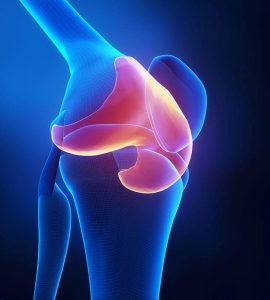Falls happen in the blink of an eye. Whether you trip while jogging, miss a step on the stairs, or slip on a wet floor, the natural reaction is to stretch out your hands to break the fall. This instinctive action often leads to what doctors call a FOOSH injury, which stands for “Fall On Outstretched Hand.” FOOSH injuries can range from mild sprains to severe fractures that require surgery.
What Is a FOOSH Injury?
A FOOSH injury occurs when you fall forward or backward and land with your arm outstretched to break the impact. This sudden force travels through the hand and wrist into the arm, sometimes reaching the shoulder.
Because the hand and wrist are not designed to absorb such high-impact forces, they are prone to injuries. These injuries may involve the bones, joints, tendons, or ligaments of the hand and wrist.
Common Types of FOOSH Injuries
FOOSH injuries vary depending on how you land, your age, and the strength of your bones. Here are the most common types:
-
Wrist Fractures
The wrist is the most frequently injured part during a FOOSH incident. A distal radius fracture, often called a Colles’ fracture, occurs when the larger forearm bone breaks near the wrist. This is especially common in older adults with osteoporosis.
-
Scaphoid Fractures
The scaphoid is a small bone in the wrist that is prone to breaking during a fall. A scaphoid fracture may not always cause severe pain right away but can lead to long-term complications if untreated.
-
Hand and Finger Fractures
Landing on an outstretched hand can result in broken metacarpal bones in the palm or fractures of the fingers.
-
Shoulder or Elbow Injuries
In some cases, the force from a FOOSH can travel upward, leading to dislocations or fractures of the shoulder or elbow.
-
Sprains and Ligament Injuries
Not all FOOSH injuries result in fractures. Ligaments in the wrist or hand can stretch or tear, leading to pain and instability without broken bones.
Who Is Most at Risk?
While anyone can experience a FOOSH injury, certain groups are more vulnerable:
- Older adults with weaker bones are more prone to wrist fractures
- Athletes in sports like cycling, skating, or snowboarding are at higher risk due to frequent falls
- People with balance issues or neurological conditions are more likely to fall
- Individuals with osteoporosis face a higher chance of severe fractures
Symptoms to Watch For
Recognizing the signs of a FOOSH injury can prevent complications. Symptoms may include:
- Immediate pain in the wrist, hand, or forearm
- Swelling, bruising, or visible deformity
- Difficulty gripping objects or moving the wrist and fingers
- Numbness or tingling in the hand, indicating possible nerve involvement
If any of these symptoms appear after a fall, please seek medical evaluation.
Diagnosing FOOSH Injuries
An orthopaedic specialist will perform a physical examination to assess tenderness, swelling, and range of motion. Imaging tests often confirm the diagnosis:
- X-rays identify fractures or dislocations
- CT scans provide detailed images of complex fractures
- MRI scans detect ligament injuries or small fractures that X-rays may miss
Early and accurate diagnosis ensures that the injury is treated correctly and reduces the risk of long-term complications.
Treatment Options
Treatment depends on the type and severity of the FOOSH injury. It may range from conservative care to surgical intervention.
Non-Surgical Treatments
- Immobilization – A splint or cast keeps the wrist or hand stable while the bones or ligaments heal
- Rest, Ice, Compression, Elevation (RICE) – Reduces pain and swelling in the early stages
- Pain management – Over-the-counter medications or anti-inflammatory drugs can help
- Physiotherapy – Once the initial healing phase ends, exercises restore strength and mobility
Surgical Treatments
Surgery may be required for:
- Severe fractures where the bone fragments are displaced
- Scaphoid fractures with poor blood supply
- Ligament injuries causing joint instability
Surgical techniques often involve pins, screws, or plates to stabilize the bones, followed by a structured rehabilitation program.
Recovery and Rehabilitation
Healing from a FOOSH injury can take weeks to months, depending on the severity. Mild sprains may resolve within a few weeks, while fractures can take 6 to 12 weeks to heal fully. These may focus on:
- Improving wrist and finger mobility
- Strengthening grip and forearm muscles
- Restoring coordination for daily activities
When to See an Orthopaedic Specialist
Never ignore persistent pain, swelling, or reduced mobility after a fall. Early treatment prevents complications like chronic pain, joint stiffness, or improper bone healing.
A prompt visit to an orthopaedic specialist ensures accurate diagnosis, proper treatment, and a faster recovery, helping you return to daily activities without long-term consequences.




